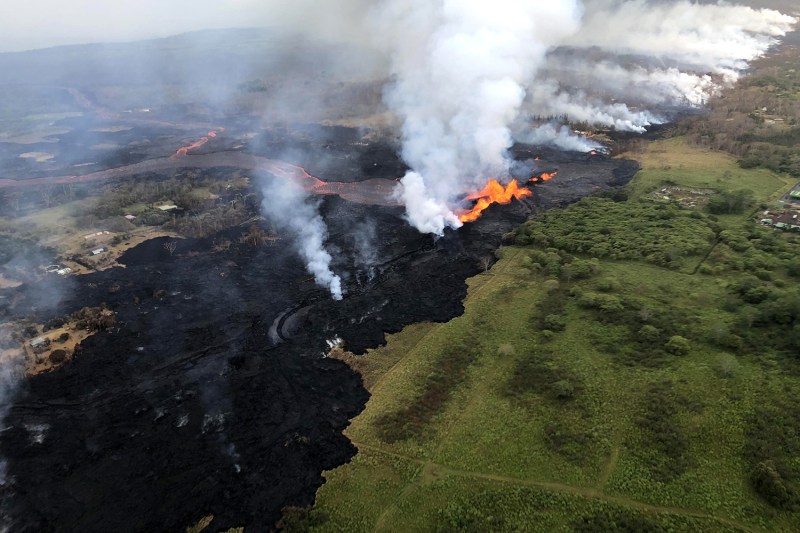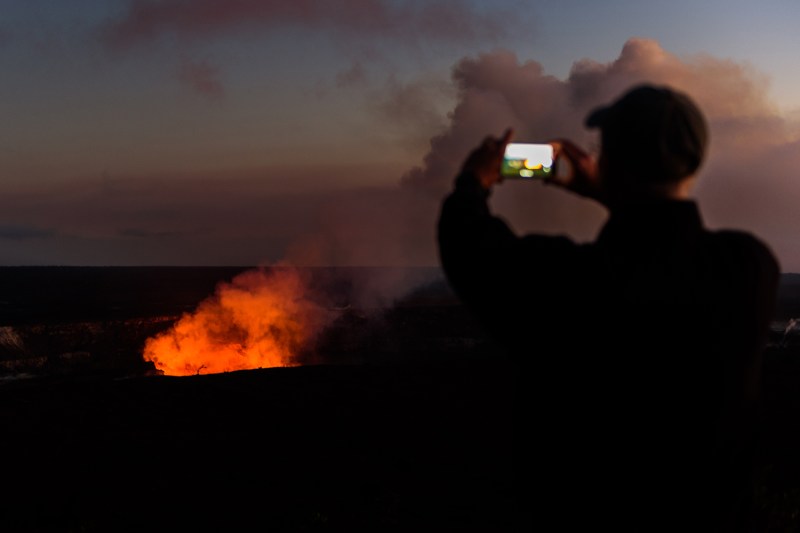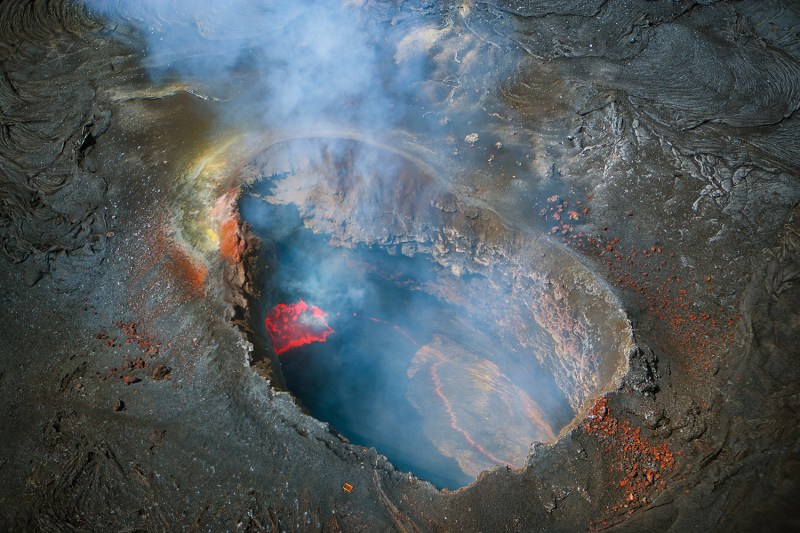In May of 2018, all hell seemed to break loose on the Big Island of Hawaii when active volcano Kilauea began erupting with unusual force. The internet was full of images of molten lava snaking down the mountainside, drowning neighborhoods in liquid fire. Each cascade of lava was heralded by sinister tremors in the earth and chased by thick clouds of toxic sulfur dioxide gas. Locals and visitors alike fled the area, fearing that highways and other escape routes would be blocked by lava flow or mountains of ash.

Worldwide comment on the eruption was predictably dire. News organizations reported that hotel rooms would sit vacant, cruise ships were canceling visits to the island, and thousands of local families who depend on the tourism economy would go hungry. The closure of Hawaii Volcanoes National Park, the state’s top tourist destination, was projected to cost the island $166 million.
The reality was only a little less sensational. Kilauea is the most active volcano on the planet, and has been in a near-constant state of eruption since 1983. Locals are used to minor tremors, as well as clouds of “vog” (volcanic smog) drifting through the atmosphere. But there’s no denying that this volcanic activity was unusually forceful, not to mention destructive. Geologists classified 2018’s eruption cycle among the worst volcanic events in a century. After four months of continuous eruption, more than 55 squares miles of the Big Island had been blanketed by lava flow. At least 700 houses were reported to have been destroyed, and costs for recovery efforts were estimated to be above $800 million.
While the eruption’s environmental damage was significant, it was nowhere near as bad as the damage to the Big Island’s tourist trade. Ross Birch of the Island of Hawaii Visitors Bureau told USA Today that “the effect of possible cancellations … is quite honestly a greater impact on our island economically than our lava flow.”

Shockingly, and happily, the island’s tourism bounced back with remarkable vigor. By July of 2018, Hawaii as a whole was already setting a new record in arrivals, and overall spending on the islands was up 10%.
It’s hard to know what to attribute this turnaround to. Even as visits to the Big Island dropped during the volcano’s eruption cycle, tourism in Oahu, Maui, and Kauai skyrocketed. Perhaps travelers were inspired by a healthy dose of FOMO — realizing how quickly Hawaii’s landscape can change from a geological event, they flocked to enjoy the islands while they are still there.
Meanwhile, back on the Big Island, the subsiding of Kilauea’s eruption cycle revealed a host of new natural wonders left in the wake of the volcano’s fury. One of the island’s most popular beaches, Isaac Hale Beach Park (locally known as Pohoiki) sported a new black sand look, as well as a number of thermal ponds newly created by the mixing of lava and ocean water. This year, pilots flying over Kilauea’s caldera spotted a luminous turquoise pond within the crater. This mysterious natural phenomenon is being studied not only by the U.S. Geological Survey (USGS), but also by helicopter tour companies who now offer flyover tours of the crater. And while Volcanoes National Park is still working to repair the damage wrought by Kilauea, the park’s closures has led to renewed interest in other, less-explored features within the park, such as Puʻu Loa, the “hill of long life,” the Holei Sea Arch, and Kealakomo Overlook.
Hawaii’s state tourism authorities have also been working to pivot their branding of the Big Island from “come see the active volcano” to “choose your own adventure.” Rather than put all their eggs in Pele’s basket, the state has wisely diversified its emphasis to include many different types of exciting activities and experiences with nature, so that next time Kilauea acts up, it won’t have quite as heavy an impact on their tourism economy.

All that being said, if you’re determined to visit a volcano while traveling in Hawaii, you’re not completely out of luck. If you hang out in the lower Puna District until dark, you’ll be able to see the unearthly glow of molten lava trickling from Kilauea. You can also visit new land formations created by 2018’s lava flow, and visit the part of MacKenzie State Recreation Area where the lava flowed spilled over the highway and into the ocean. Tour companies are even offering “lava hikes” that lead around cracks, sinkholes, and other geological formations created by last year’s eruption.
And if your lust for adventure requires seeing a volcano in action, we have good news: Last July, federal officials raised the alert level for Mauna Loa, not only the largest active volcano in the world, but also notorious for going off fast and furious. So keep your fingers crossed, keep your eye on the seismometer, and study up on your volcano eruption survival tips. You just might get … lucky?


